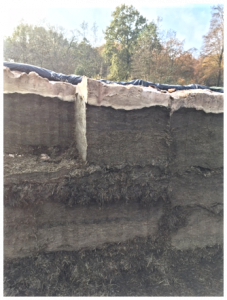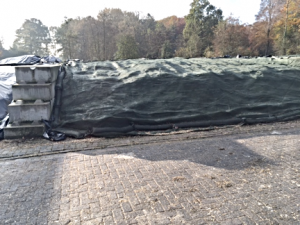Cows and Crops, June 2016

Gary Anderson, Animal & BioScience Specialist
Rick Kersbergen, Sustainable Dairy And Forage Systems
David Marcinkowski, Dairy Specialist
Save the Date
2016 Sustainable Agriculture Field Day Tour
Thursday, June 30, 2016 from 4:30 – 7:00 pm
Rogers Farm 914 Bennoch Rd, Old Town, ME
FREE! Pesticide Credits Available: 1, CCA Credits Available: 2.5
Please join us for our annual sustainable agriculture field day tour, which will be focusing on the following topics:
- Small grains – Wheat and barley variety trial, Diseases census in cereals, and Cover cropping for N management in cereals
- Potatoes – Nurse crops, Crop circle sensors, and Mycorrhyzal fungi
- Vegetables – Managing weeds with soil solarization and HAK cultivator demonstration
- Risk Management – Strategies for small production farmers
Acreage Report Deadline Approaching for Spring-Seeded Crops
Deadline Friday, July 15, 2016
Farmers with crop insurance on a spring-seeded crop (i.e. potatoes, small grains, corn, etc.) must submit acreage reports to their crop insurance agent by the deadline.
Maine Farm Days 2016
Wednesday – Thursday, August 24 – 25, 2016
Misty Meadows Farm, Clinton, ME
Covering bunker silos…everyone’s favorite job!

You’ve spent a lot of money getting that crop into your silo … now take some time not to loose it!
As I watch all sorts of techniques to cover bunker silos, I have to refer back to my trip to the Netherlands where forage is limited and expensive! Every farm I visited made every attempt to minimize losses from the bunker. (see photos below)
I often shake my head at what I see on many farms where tons of spoilage are thrown away each year. This “shrink” is a major financial loss that never really shows up in the checkbook except for higher grain bills and lost milk production!
Some things to ponder when you are covering your valuable quality forage…
- The thicker the plastic, the less loss you will experience. Plastic that is 8.5 mils thick will out perform traditional 6-mil plastic and will hold up to walking and other hole punching problems.
- White plastic (white side up!) will also reduce losses.
- Oxygen limiting barriers do reduce dry matter and spoilage losses, when combined with good plastic management.
- Lining the sides of the silo with plastic will also greatly reduce losses. This is something I see very few people do, but can greatly enhance good fermentation.
- Design your covering to reduce/eliminate water infiltration down the sides of the silo. Use sandbags to try and seal the edges and divert water and melting snow away from your feed.
- Consider alternatives to just plastic. Producers in Europe often use tarps on top of the plastic and then put sand on top instead of tires. The tarps greatly reduce the potential for holes in the plastic. Sandbags could be used with the tarps to hold down the covers as well.
When covering the silo, remember that securing the plastic to keep air out is just as important choosing the right covering! If you see your plastic “billow” in the wind, it is not keeping air out of the silo!
- Bunker silo on cobblestone with plastic covered with a tarp and sandbags on edges. Photo by Rick Kersbergen.
- Bunker silo covered with plastic tarps and sandbags. Note the washed sidewalls. Photo by Rick Kersbergen.
Corn and Soil Nitrate Testing-using the PSNT
Much of the corn is now near or at the stage for Soil N testing (8″-10″ tall). Many of you have done this in the past, but many farmers don’t use this tool at all. While far from perfect, the test does give you some idea of where your crop stands and what it might need for the next few months.
More information about the test from Penn State.
With the PSNT, for optimum N nutrition for corn, the soil nitrate-N level in the PSNT should be above 21 ppm when the corn is 12 inches tall or around leaf stage 5-6. If it is above this level, there is adequate N in the soil to meet the needs of the crop. However, if it is below this critical level then sidedressing additional N is recommended, even if adequate N was applied earlier.
A couple of important points to keep in mind when using the PSNT:
Wait until the corn is at least 12 inches tall — sampling too early can give misleading results. Late is better than early, as long as you still have time to sidedress if necessary.
Do not sample immediately following heavy rains, wait at least 2-3 days.
Take a 12-inch deep soil sample. Dry the sample the same day it is collected! Ideally you can dry on some newspaper in the sun (on a non-windy day!) The sample should be taken between the rows so as not to hit any starter bands.
Use a quick test kit or send the dry sample to a soil testing lab for NO3-N analysis.
I have the materials to run some batches here at my office…but only if you take and dry the samples and get them to me in a timely manner. Many crop consultants do this as a service as well.
Checking Plant Populations
Now that corn has been planted and growing well, many producers want to check on plant populations. There are several ways to do this that involve some calculations using 50 ft of row length. A simpler way to determine plant populations on your fields can be done by dividing 522.7 by the row width that you use. The resulting answer is the number of feet in a row that equals 1/1000 of an acre. Count the plants in that length at several locations, take an average and multiply by 1000 to get plant population per acre. For example, if I use 28 inch rows, 522.7/28=18.7 ft. I count the plants in 18.7 ft at several locations and take the average times 1000 to get my plant population per acre.
Here is a table of some row widths and lengths of row that equal 1/1000 of an acre.
| Row width, inches | Row length in feet for 1/1000 acre |
|---|---|
| 15 | 34.8 |
| 28 | 18.7 |
| 30 | 17.4> |
From: UT Agronomic Variety Trials
Protected PTO shafts!
Don’t take the risk!
Some recent tragedies in Maine should be food for thought next time you hook up a damaged cover or reach over a moving shaft. Many farms use PTO equipment with damaged PTO shaft covers or even no cover at all.
Replacement PTO shields are available. Working with NYCAMH (New York Center for Agricultural Medicine and Health) , I have received some funding to off-set the cost of farmers replacing broken or missing PTO shields. These universal type shields are easy to install and can save your life or those of your loved ones!
Additionally, I have some funds to help replace worn or damaged slow Moving Vehicle (SMV) signs that should be on every tractor and implement on the farm that goes down the road.
Please contact me if you are interested so we can work to protect you and your employees!
Mycotoxins in Feed
Reports of mycotoxins in feed are being heard across the state. Mycotoxins are produced by molds in feed. The main mycotoxins seen are DON (also called vomitoxin), T-2 toxin, fumonisins and zearalenones all produced by Fusarium molds and aflatoxins produced by Aspergillus molds.
Aflatoxin is the only one that is regulated due to human health issues. A metabolite, aflatoxin M1, can be measured in milk; rations over 20 parts per billion (ppb) aflatoxin usually produce milk with higher levels of aflatoxin M1 than the legal limit. Several years ago when there were high levels of aflatoxin in the Midwest, every tanker load of milk was analyzed for aflatoxin M1.
Samples of feed ingredients for mycotoxin analysis should be taken from several locations and/or sampling the mixed feed for an accurate result. Grab samples of feed from one location may give inaccurate results with one location having no mycotoxins and other areas being high. If you have one mycotoxin, you may also have others in the sample; doing a mycotoxin screen for several toxins is recommended.
In general, mycotoxins affect milk production, general health of animals and reproductive efficiency. The impact of mycotoxins on animals varies greatly by species. There are feed additives that act to either bind mycotoxins or deactivate mycotoxins. There are several products available and most dairy producers have these in their feed on a regular basis. Typically, products that both bind and deactivate are used in rations. If you have questions on what products are available, talk with your feed consultant to see what they have.
Action levels in complete feed for various mycotoxins for dairy cattle from Cumberland Valley Analytical Services are Aflatoxin, 20 ppb; Vomitoxin (or DON), 2 parts per million (ppm); Zearalenone, 25 ppm; T-2 toxin, .5 ppm.
If you have further questions or would like additional resources, please contact the state livestock office in Orono.
Maine Hay Directory
Did you know that UMaine Extension manages a hay directory for buyers and sellers of hay and hay products? If you have hay or forage to sell, this listing June help you find buyers! If you are interested in posting your products or looking for feed to buy, check out the directory at the Maine Hay Directory.


